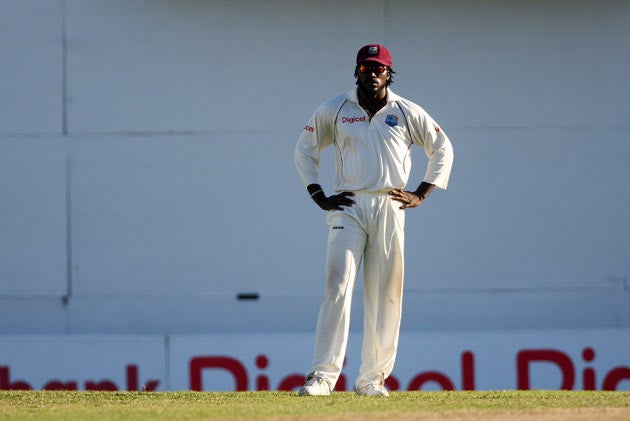Gayle duped by promise of fast, bouncy pitch

Like some neglected, forgotten old uncle suddenly invited to a Buckingham Palace garden party, the Antigua Recreation Ground was hastily revived over the past two days for its unexpected return to the limelight as the Test venue it had been for 25 years before they replaced it with a swanky new stadium up the road.
Once that had embarrassingly failed in its purpose and the second Test was abandoned after 10 balls on Friday, the ARG was quickly remembered and spruced up.
The white lines on the outfield marking a football pitch revealed its main role now. The state of the stands told of the years of neglect since the once vibrant ground in the heart of the capital, St Johns, site of more batting records than all the others in the region put together, had hosted its last Test in 2006.
Understandably, no one knew what to expect from it now. In the three years since its enforced retirement, no cricket of any kind has been played there. Apart from football, the other activities have been the annual carnival, a couple of beauty queen shows and a religious convention.
The only criteria by which to judge were a couple of net sessions for each team prior to Friday's ill-starred Test. They both reported those pitches to be fast and bouncy.
Once it was decided to locate the new Test at the ARG, locals cautioned them not to jump to conclusions on such evidence.
For a day and a half, the heaviest roller that could be located in Antigua, supposedly imported to be used on the island's notoriously rocky roads, flattened the surface for hours. Yet neither side could be convinced that it would be what it always has been, the most batsman-friendly ground in all cricketdom.
In spite of the record of 54 hundreds in its previous 21 Tests – among them Brian Lara's records, 375 in 1994 and 400 not out 10 years later, both against England, and Chris Gayle's 317 against South Africa in 2005 – each captain revealed that he would choose to bowl if the spin of the coin fell in his favour. England restored Steve Harmison to their ranks in anticipation of the life experienced a few days earlier.
As soon as Andrew Strauss called "heads" and the coin landed "tails" up, Gayle confirmed his option. It did not take long for him to appreciate that he had been duped by what he had come across at practice during the week and for Andrew Strauss for do likewise.
This was the old ARG, no different to what it used to be. The pitch was as flat as it always had been, the outfield perhaps even faster, the boundaries still invitingly short.
They were factors that appeared immediately to depress West Indian bowlers and lift England, especially their captain Strauss.
Dismissed in single figures at Sabina Park, his team routed for 51 and trounced by an innings, he was as down as Michael Atherton had been after the similar debacle at the Queen's Park Oval in 1994 when their all-out total was 46.
Quickly assessing the conditions, Strauss played with great certainty, cutting and pulling when the bowlers pitched short, driving down the ground. He needed a little luck. He should have been run out at nine, caught at slip off Sulieman Benn at 47 and bisected keeper and slip off Ryan Hinds, the other left-arm spinner at 71.
But Strauss never lost his positive intent against opponents who lacked the energy that had made them such a force in the first Test at Sabina Park.
A captain's innings is usually a tired cliché. In this instance, it perfectly characterised Strauss' performance. It could well be, in the end, even more than that as England press for a series-levelling victory.
A week ago, that was not a plausible consideration.
Subscribe to Independent Premium to bookmark this article
Want to bookmark your favourite articles and stories to read or reference later? Start your Independent Premium subscription today.

Join our commenting forum
Join thought-provoking conversations, follow other Independent readers and see their replies